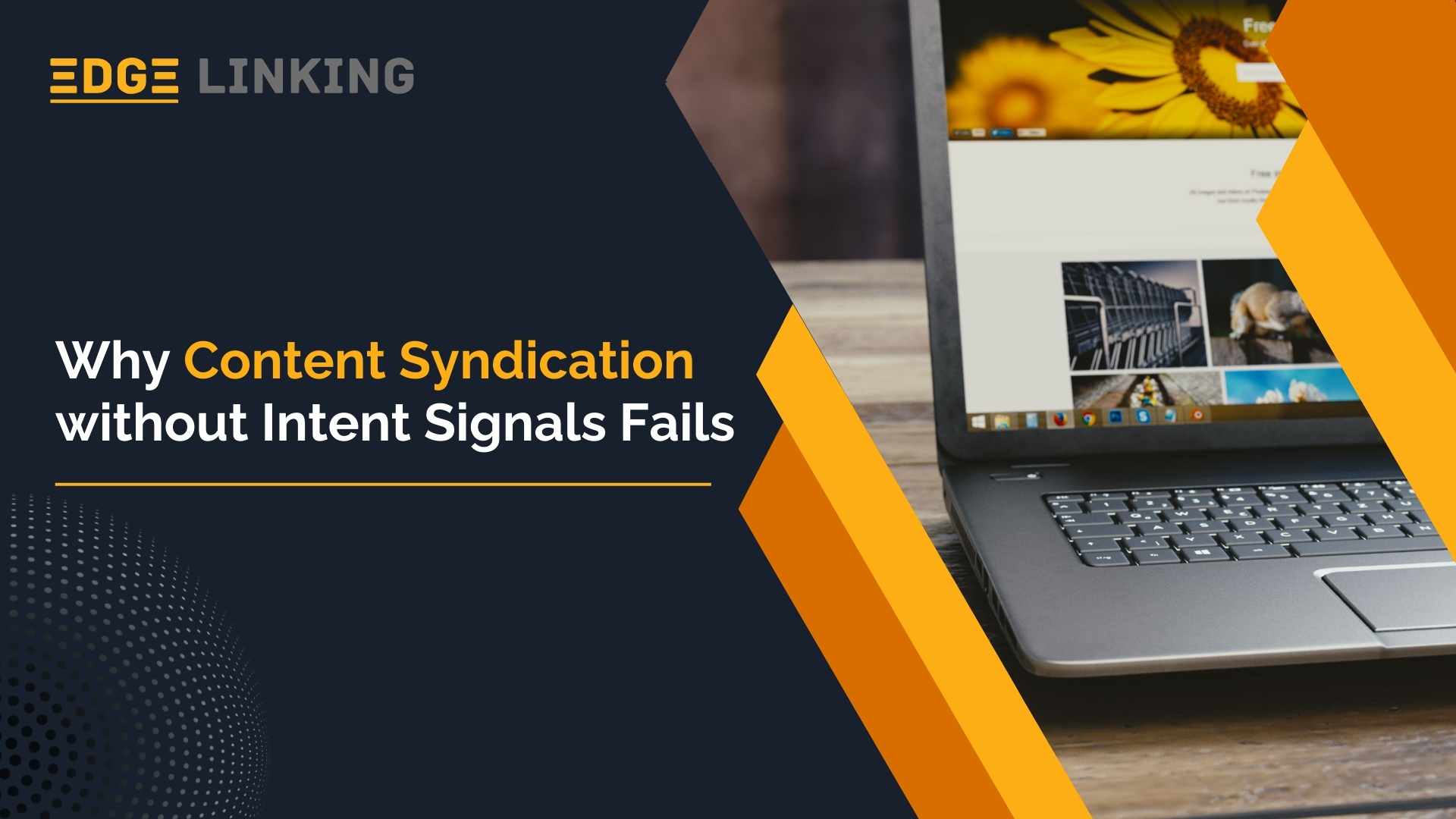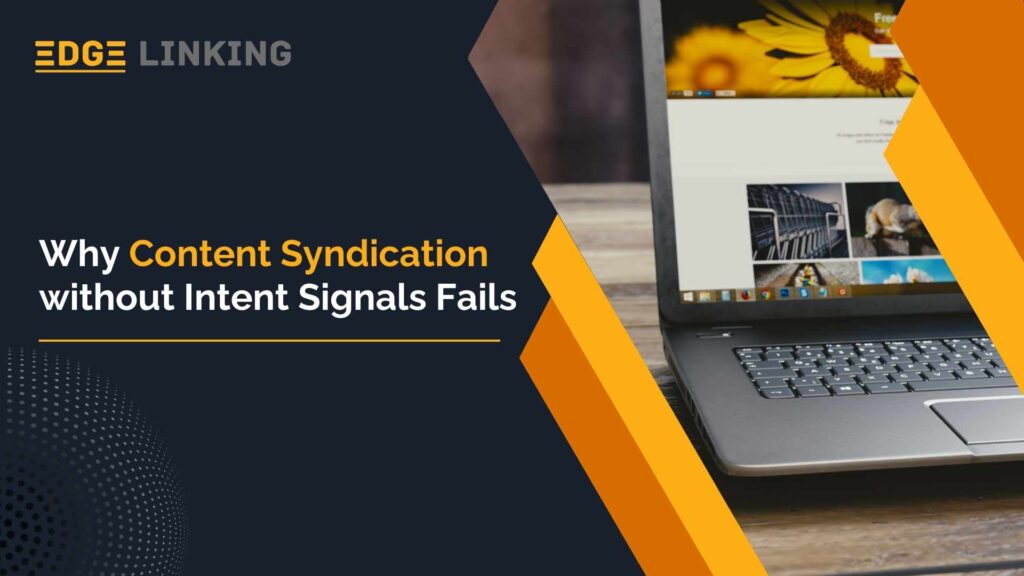Your marketing team creates a whitepaper, loaded with insights and strategies for your target audience. You use content syndication to distribute. Downloads start rolling, but when your sales team begins outreach, many don’t have interest in your solution. The campaign results in wasted resources and fails to generate revenue.
The absence of intent signals becomes a dealbreaker in content syndication. Without understanding who is actively in the buying journey, you’re casting a wide net into the ocean, hoping to catch the right fish. Intent signals flip the game. By tracking digital footprints such as search behavior, content consumption patterns, and engagement on third-party sites, intent data helps marketers identify which accounts are actively exploring.
This article will discuss the importance of intent data for content syndication.
Why You Need Intent Signals for Content Syndication
The following are the reasons why you need buyer intent data.
1.Reaches the Right Accounts
Buyer intent data broadens the net, ensuring your content lands in front of prospects actively researching solutions like yours.
Example: A cybersecurity firm syndicating whitepapers to companies showing spikes in searches for “zero-trust architecture” sees higher engagement from CISOs.
2.Shortens the Sales Cycle
When your content is delivered to accounts already being explored, your sales team engages with prospects who are much closer to deciding.
Example: A SaaS company targeting finance teams uses intent data to syndicate ROI calculators to accounts showing interest in “expense automation tools.”
3.Improves Marketing and Sales Alignment
Buyer intent signals create a bridge between marketing and sales. Marketing can prove that the leads generated via syndication are accounts showing intent, giving sales to outreach.
Example: A cloud provider shares weekly reports of syndicated leads with its sales reps, who then target those accounts with personalized outreach.
4.Maximizes ROI on Content Investments
Without intent, your distribution may waste budget pushing assets to uninterested audiences. Intent ensures that your efforts yield a measurable pipeline.
Example: A manufacturing tech firm creates an industry trends report. Using syndication, the report reaches prospects searching for “smart factory automation”.
5.Strengthens ABM Strategy
Intent-powered syndication ensures that high-value target accounts are nurtured with relevant content throughout their buyer journey.
Example: An IT services provider aligns syndication campaigns with its ABM list, using intent data to prioritize accounts engaging with topics like “cloud migration strategy.”
How to Implement Intent Signals in Content Syndication
The following is the approach to implement intent signals in your content syndication strategy.
1.Start with a Clear ICP
Define your Ideal Customer Profile (ICP) and identify the decision-makers. Intent signals create value when aligned with the right target audience.
Example: A SaaS automation firm defines its ICP as finance teams led by CFOs. By mapping signals, syndication campaigns deliver ROI guides to accounts.
2.Integrate Third-Party Intent Data
Partner with intent data platforms that monitor search behavior, content engagement, and keyword spikes. It helps you identify in-market accounts before they visit your website.
Example: A cybersecurity company integrates Bombora intent data to detect prospects searching for “zero-trust frameworks,” then syndicates content like compliance checklists.
3.Align Syndication Partners with Intent Insights
Choose partners that can overlay your content distribution with intent signals to ensure precise targeting.
Example: A cloud solutions provider works with a syndication partner that maps intent data to target accounts, ensuring whitepapers are sent to IT leaders researching “hybrid cloud migration.”
4.Personalize Content by Stage of the Buyer Journey
Tailor syndicated content such as thought-leadership blogs, case studies, or ROI calculators to match the buyer journey.
Example: A FinTech firm sees that a set of banks is consuming “AI in fraud detection” content. They syndicate ROI-focused case studies to showcase proven outcomes.
5.Enable Sales with Real-Time Insights
Provide sales reps with context on what accounts are researching and which assets they’ve engaged with, so outreach is timely and relevant.
Example: A HRTech company alerts sales teams when target accounts download syndicated assets tied to “employee engagement platforms”.
6.Measure Beyond Downloads
Success should be measured through pipeline creation, deal velocity, and conversion.
Example: A manufacturing solutions provider tracks how many syndicated leads move into late-stage opportunities, demonstrating clear ROI.
How Intent Signals Transform Content Syndication ROI
Here’s how intent signals help drive ROI.
1.From Lead Volume to Lead Quality
Intent signals filter out noise by identifying relevant accounts. It ensures marketing dollars generate leads worth pursuing.
Example: A SaaS provider syndicates a productivity report to companies showing surging interest in “workflow automation.”
2.Improved Sales Efficiency and Pipeline Velocity
With intent-backed syndication, sales focus on accounts that already demonstrate buying behavior, thereby accelerating deal velocity and improving pipeline health.
Example: A cybersecurity vendor uses intent to detect firms researching “endpoint protection.” Syndicating solution briefs to those accounts gives sales a warm entry point.
3.Higher ROI
Intent allows marketers to prioritize high-value accounts in syndication campaigns, ensuring that the budget is concentrated on prospects most likely to convert.
Example: An IT services firm syndicates case studies only to companies showing intent around “cloud migration strategy,” resulting in larger deal sizes.
Conclusion
In the B2B landscape, buyers are more selective, journeys are more complex, and attention spans are shorter. Syndicating content without understanding is like delivering brochures at random street corners. You may reach people, but not the ones ready to buy. Content syndication without intent signals fails because it lacks direction. With intent, syndication enables organizations to target with accuracy and convert with speed.
Stop treating syndication as a volume play and start treating it as a strategy. One who does it will not shout the loudest, but those who listen the closest will be the most effective.






